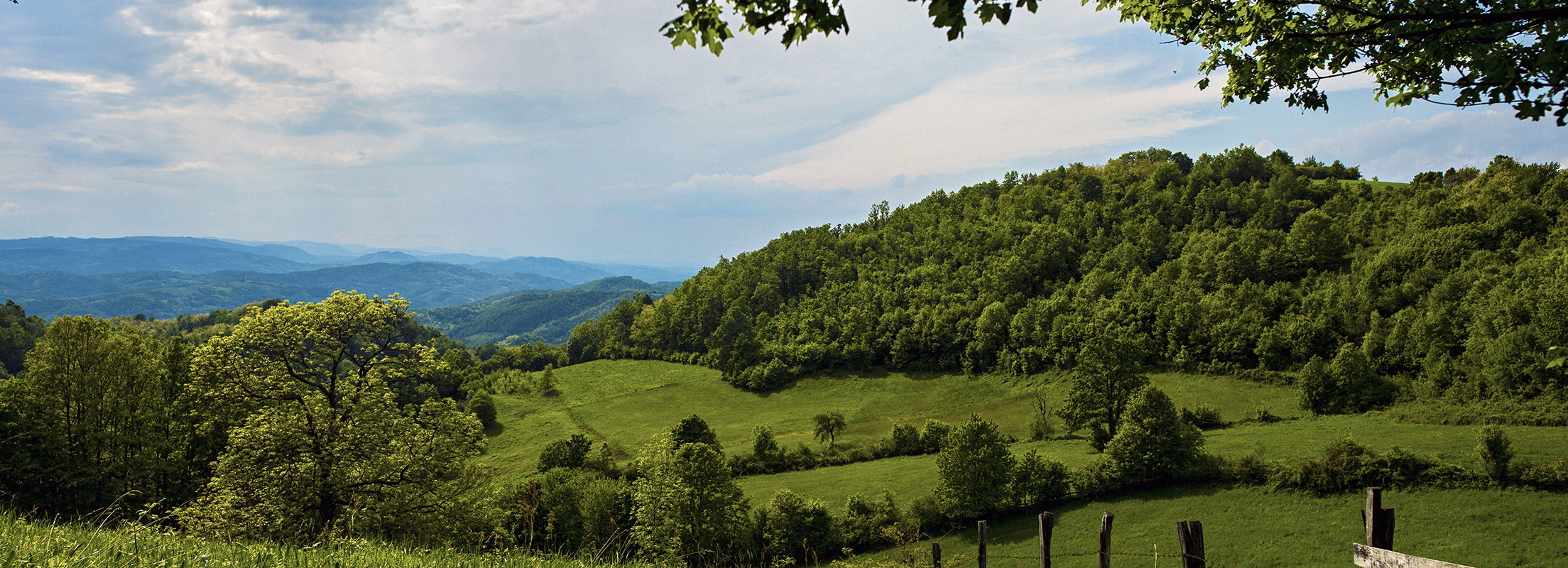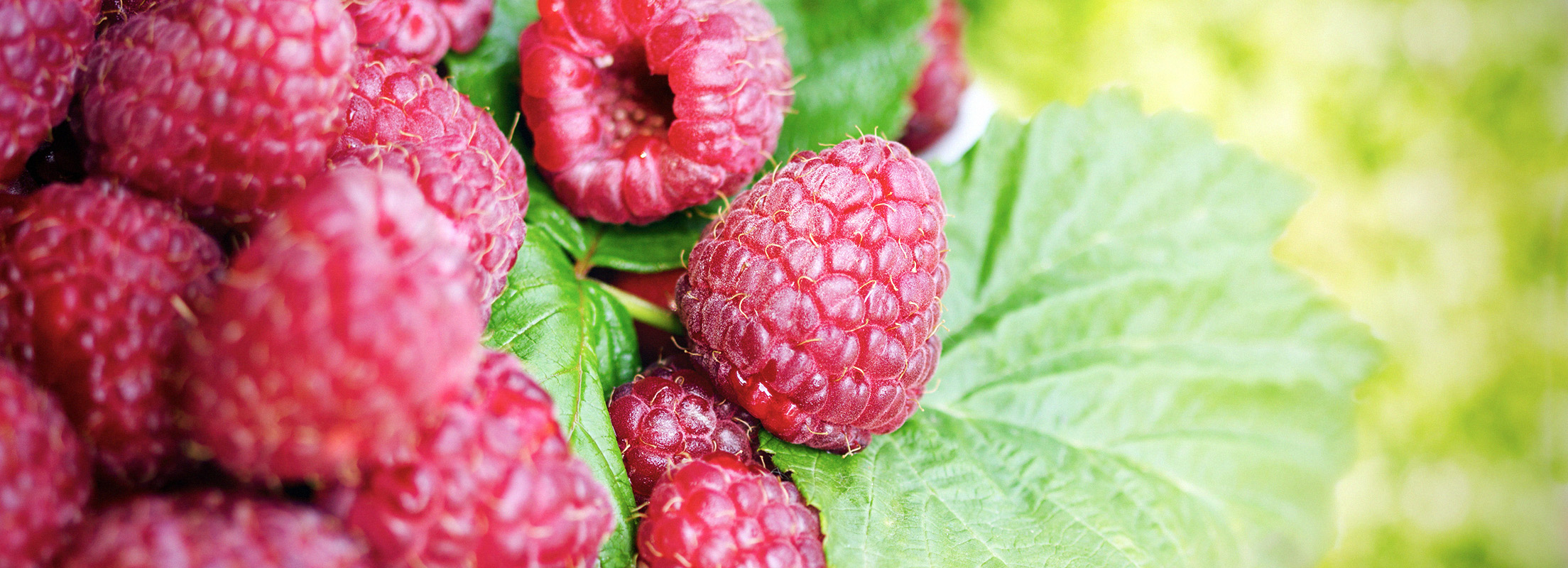

Famous for is many forests – indeed, its very name, Šumadija, is derived from šuma, Serbian for forest – Central Serbia is perfect for holidays and relaxation in a rural environment.Here, you will sleep soundly in the authentic houses of Šumadija, on farms where ancient domestic animals are bred, while your generous hosts serve you roast meat and sauerkraut. Relax with a sip of homemade wine or “Šumadija Tea” – rakija boiled with water and caramelised sugar – and enjoy the view of fertile vineyards, orchards and farmlands.
Be sure to enrich your stay in the villages of Central Serbia by visiting the many natural and cultural landmarks of the area.
The roads along the slopes of Rudnik mountain are dotted with numerous households which provide rural tourism services, in reconstructed authentic houses, with healthy food and clean water from local springs. At the Veliki Šturac Nature Reserve, take a stroll through a very rare ancient forest community of beech woods, some of which are more than 300 years old.
A walk on the forest paths is sure to make your stay even more interesting, while scaling the mountain’s peaks will pose a challenge all true mountaineering aficionados will find hard to resist. Bear in mind, though, that the sharp peak of the volcanic cone named Ostrovica is extremely difficult to conquer and scaling it is not recommended unless you are an experienced climber.
Nestled on Suvobor and Rajac mountains there are several villages from which you can set off to explore the natural assets of this region. Find refuge on Rajac mountain, away from the urban hustle and bustle, and discover the natural beauty which earned it its name - derived from raj, Serbian for paradise.
The lush meadows full of native Serbian plants have inspired the local population to hold the famous annual Rajac Scythe Festival, where participants contend for the title of the best mower, with plenty of foods, merry music and supporting events. Rajac mountain also has one of the most beautiful viewpoints in Serbia, with excellent views of all parts of the country.
And if you wish to discover the very heart of Serbia, stay at one of the households around the village of Drača near the city of Kragujevac, which sits right at the geographical centre of our country!
With their maintained trails and exquisite scenery, Gledić mountains are a favourite destination with domestic and foreign mountaineers and cyclists alike.
Due to its exceptional plant and animal diversity, Golija mountain and its surrounding area has been declared a UNESCO Biosphere Reserve. As you stay at the nearby villages, you will be surrounded by more than a thousand different plant species and as many as a hundred species of birds. Golija mountain welcomes you with maintained ski slopes and ski lifts, hiking and fitness trails and paragliding sites.
Not far from Golija mountain flows the river Ibar. Every year it hosts the Merry Race, an event that brings thousands of visitors to sail down the river accompanied by music, beautiful weather and merriment.
The valley of the river Ibar is often called the Lilac Valley, a nickname it earned in the Middle Ages, when King Uroš I ordered lilacs to be planted along the valley to remind his future wife, Helen of Anjou, of her homeland Provence.

Grapes have been grown in the fertile plains around the town of Topola since ancient times. The region experienced a true renaissance of winemaking with the opening of the Venčac Vineyard Cooperative during the reign of King Peter I. The former royal winery, now the Royal Winery Museum, keeps decades-old exclusive wines from all over Europe, antique wine pumps and other tools, as well as wine cask, the oldest of which was made in 1909.
The village of Bela Voda near Kruševac is the extraction site of exquisite sandstone, used in the construction of numerous Serbian monasteries. It also has a Stone Masonry and Sculpture Museum of the Morava Style, where you can see numerous sculpture exhibits, photographs of buildings made from this sandstone and the famous stone rosettes of Bela Voda.
In the village of Lipovac you can see a unique natural and historic monument – the Sacred Oak. Legend has it that the oak was the gathering site of rebels during the First Serbian Uprising against Ottoman Turks and science has confirmed that this richly ramified oak is more than 300 years old.
The cuisine of the region around the city of Kragujevac is mainly based on sauerkraut, with dishes such as smoked ham in sauerkraut, boiled wedding cabbage with meat, onions and spices, as well as podvarak (sauerkraut, first fried and then baked, served with pork or turkey meat).
Lamb and veal roasted under a metal or ceramic lid (pod sačem)and homemade wine are seen as a match made in heaven and an indispensable part of any festivity in this region.
A typical beverage of Central Serbia is the “Šumadija Tea” – šljivovica boiled with water and sugar, to warm the body and boost immunity.
Villages around Bukovička Banja spa will welcome you with roast meat and proja, a corn bread mixed with mineral water, while at Vrnjačka Banja spa you can taste Vrnjci, a mineral water with a protected origin designation.
Owing to extensive cattle farming on Goč mountain near Vrnjačka Banja spa, almost every household in the area has a supply of fresh milk, which they use to make the famous Goč cheese and kaymak, a kind of clotted cream. Your hosts will serve you these dairy delicacies with hot buns made from dough mixed with mineral water and wild garlic.
Central Serbia also has several wine regions, with many family-run wineries which produce homemade wines from grapes grown in their vineyards. In the villages on the banks of the river Toplica, you can sample a variety native to the region, Prokupac, which produces a ruby-coloured wine.
In the villages of the Aleksandrovac Wine Region, be sure to taste Tamjanika, an ancient grape variety typical of the area, which produces a wine that’s easy on the palate. It has a striking aroma and flavour, with spicy notes of cinnamon, basil and thyme (tamjan),to which this variety owes its name.
